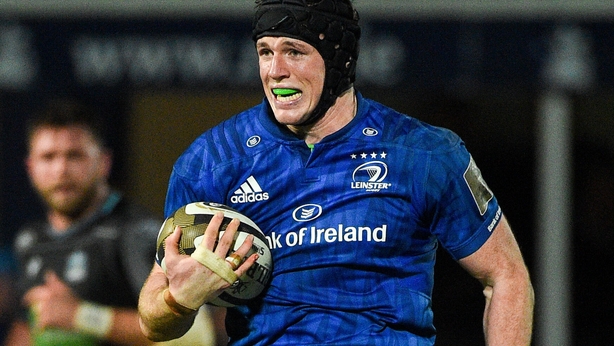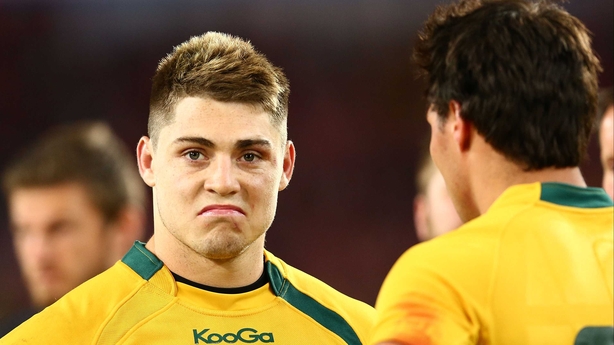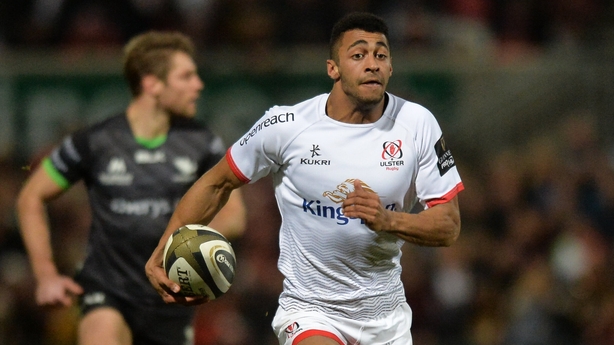A lot of young stars are starting to take their opportunity in the Pro14, showing the strength of the Irish provinces at present.
Ryan Baird burst onto the scene last weekend with a hat-trick of tries but in fairness to him and his closer supporters he has been spoken about for a few years now. An overnight success always has more layers to it that haven't been seen by everyone.
His predecessor James Ryan has been a freakish outlier since his career started. With any luck he will continue his form and rack up a monstrous amount of caps and have a huge impact on the next decade of Irish rugby.
Jordan Larmour isn’t far behind the towering second row in terms of international caps but we see many backs that shoot up the ranks a bit easier than the likes of a second row and Ryan looks like a battle-hardened international second row already at 22 years of age.

There have always been outliers. Keith Earls and Luke Fitzgerald come to mind immediately but like Larmour they weren’t fully developed international standard second rows in a game that is ever developing.
These guys are coming out of school ready to go, especially in Leinster. Not only are they physically capable but mentally they have the ability to take it all in and manage themselves in a more technical game than in years gone by.
I finished school at 17 and moved on to the UCC Under-20s soon after. I was raw. I never heard of a 1-3-3-1 shape. It wasn’t until Rob Penney came to Munster that I really understood that rugby was played in shapes more than just general movement and the around-the-corner style that we had been accustomed to.
It didn’t get much more technical than back plays and team power plays before getting back into the general movement of getting your pods around the corner and trying to create enough space or quick ball to launch a back line attack.
Forwards didn't hold width unless they were taking a rest and restarts were either high or long. In my later years there became 15 areas that you could kick the ball to from a restart. I remember being about 21 when I really started to discover how to kick them, before that it was really just to put the ball as high as you could to give someone time to get under it and hopefully win it back.

I’m not saying what I experienced was the standard by any means. Other countries have been developing these 18 and 20-year-old stars for years. James O'Connor in Australia, George Ford in England, there have been plenty of them but generally Irish players have had to wait their turn because they game was too physical for our underage and schools systems.
Munster had an array of 20 and 21-year-olds in their squad on Saturday evening. Leinster had a 20-year-old at out half and another at second row who have both already been involved in Irish camps.
With the amount of games that teams are playing nowadays you have to have a bigger and more capable squad so I accept that the game has changed a bit, but the provinces can now go deeper into their squads with younger players and still have three of the top four teams in the competition thus far.
The age that these players are developing at is becoming more impressive, offering them an unbelievable chance to soak up the information on offer at a time when they have less responsibilities to distract them from the process.
The strength and conditioning element of the game is growing rapidly with resources being poured into schools level, meaning these players are almost ready to go when they come out of school.

Even the area of nutrition is being educated earlier and earlier. I spoke to a developing elite group of rugby players on Monday night, which isn’t a resource we had when I was their age. It means players can learn about fueling, recovering and growing lean muscle mass from an earlier age so they are more capable of joining the adult game at a younger age.
Most teams are now bringing three to five reserve players to league and international matches to offer the experience to younger guys without having the nerves of match day. They can see how everything works and by the time they get there on merit half of the day will already be routine for them.
The other side is that it offers the starting team nearly a full 15 to warm-up against before the match so it seems like a win-win situation for everyone involved.
My only issue with this is in situations where coaches use it to keep the younger players happy when they’ve been banging the door down. You can’t overuse it or they will be tired of being the one brought in reserve. It should be a carrot for anyone impressing at training or in second string games but if you lose the balance it will become a stale visit to a game that young guys will detest when they feel like they’re ready.
There’s no doubt that players develop at different ages but looking in from the outside and having been there in the past, professional rugby in Ireland looks like it’s offering more game time to younger players which is great to see.
More competition means a higher standard of rugby in this country. Long may it last.


